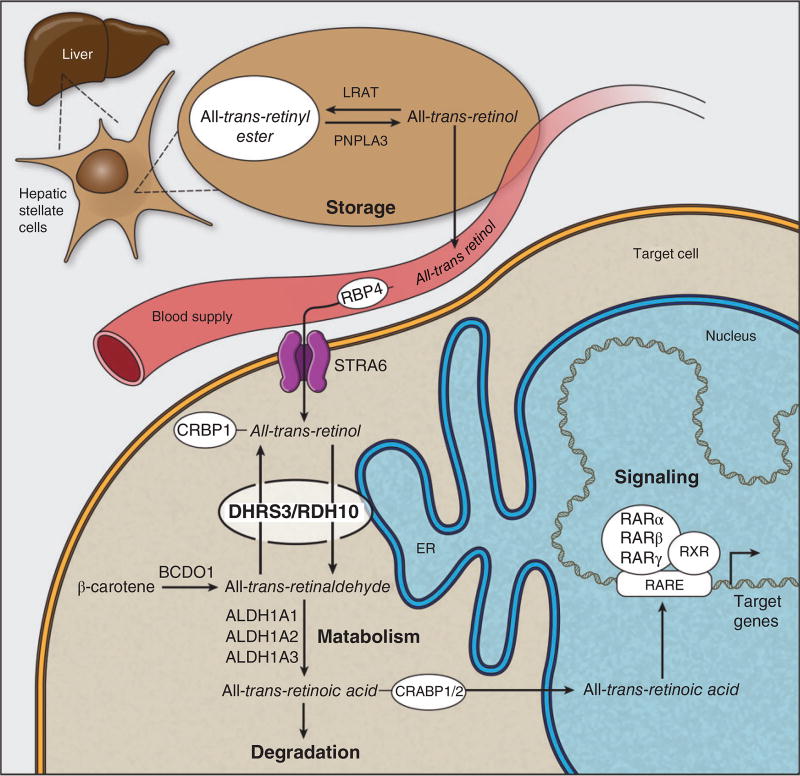FIGURE 1.
Preformed vitamin A is taken up from the intestinal lumen by enterocytes and transported via the blood supply as all-trans-retinol to its various target tissues. Large stores of vitamin A are kept in hepatic stellate cells of the liver by esterification of all-trans-retinol to retinyl esters. Mobilization of these stores is carried out by hydrolysis of retinyl esters back to all-trans-retinol where it is then transported by the blood supply through binding to RBP4. At target tissues, the RBP receptor, STRA6, allows for the import of retinol associated with RBP4. Once inside the cell, retinol associates with the RDH10/DHRS3 complex in the first reversible step of vitamin A metabolism to be oxidized to all-trans-retinaldehyde by RDH10. All-trans-retinaldehyde can then be reduced back to all-trans-retinol by DHRS3, or it may be further oxidized by the ALDH genes (ALDH1A1–ALDH1A3) to form ATRA. ATRA then serves as a ligand for one of three isotypes of the RARs which form a heterodimer with RXR. The RAR–RXRs associate with retinoic acid response elements (RARE) within the promoters of target genes and can induce both transcriptional activation and silencing.

